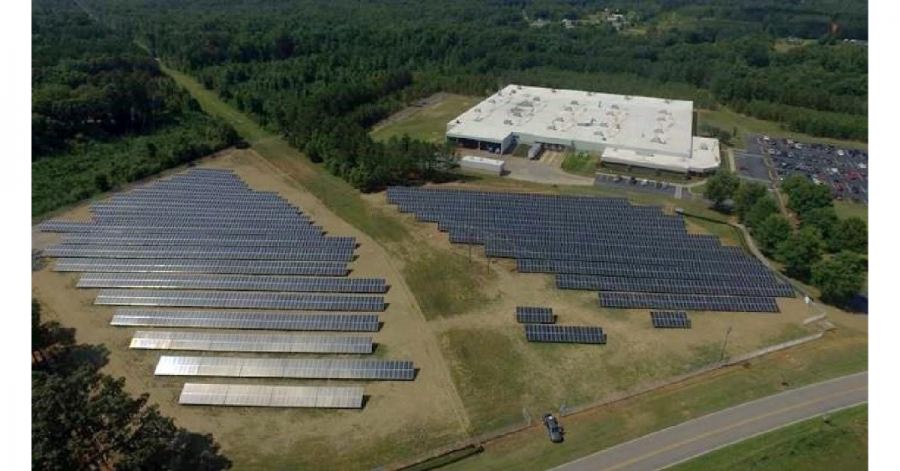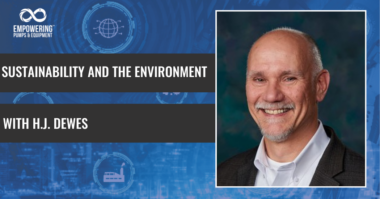The merger of Swedish ASEA and Swiss Brown Boveri Corp in 1988 was the beginning of ABB. Since then, ABB has been a global leader in energy-efficient technologies that help businesses reduce their environmental footprint while reducing costs and improving productivity. ABB’s customers are not the only ones benefiting from their improvements. ABB also utilizes its technologies and best practices to boost sustainability in its manufacturing facilities.
ABB’s Green Corporate Real Estate Management program and the ABB facility located in Belton, S.C., have implemented several projects that support ABB’s 2020 sustainability targets. These include a PV solar system, LED lighting upgrade, electric vehicle chargers, HVAC system upgrade, and a zero-waste-to-landfill policy. Most of these projects utilize ABB’s motion and electrification products.
Electric vehicle charging (2020)
The future of both public and private transportation is electric, so the Belton plant provides customers and ABB employees with access to EV chargers supplied by ABB’s charging business. The chargers were added in 2020, and a hybrid van was added to the fleet for employees to use locally. This is stored on-site and charged by an ABB Level II charger.
HVAC by the numbers
- System Size: 16 industrial units, 295 cooling tons
- Annual energy cost savings: $49,500
- Annual refrigerant & maintenance cost savings: $17,500
- Annual GHG emission reduction64 U.S. Tons
- One-time GHG emission reduction570 U.S. Tons
- Simple payback: 13 years
- ABB products: variable frequency drives, circuit breakers, switches, contactors, fan motors
High-efficiency HVAC system (2020)
With the U.S. Environmental Protection Agency’s (EPA) new regulations on refrigerants, Class I and Class II refrigerants, such as R-11 and R-22, are being phased out and replaced by new materials with a lower global warming potential (GWP) and ozone depletion potential (ODP). Heating ventilation and air conditioning (HVAC) systems that use the newer class of refrigerants are also more energy-efficient and provide better airflow. An important side benefit is improved employee wellness and morale, as according to the WELL building standard, indoor air quality directly impacts employees’ number of sick days, concentration, and productivity.
At the Belton facility, ABB installed the highest efficiency HVAC system available in the U.S. market (average IEER = 17.68). The new HVAC system uses R-410a refrigerant and reduces greenhouse gas emissions and energy consumption while reducing costs.
Zero waste to landfill by the numbers
- Increase in operating cost: $50 / ton
- Annual waste reduction: 50 – 75 U.S. tons
- Yearly GHG Emission Reduction 50 – 75 tons
2020 Zero waste-to-landfill
One of ABB’s sustainability goals for 2020 is the reduction of all waste sent to landfills by 20%. This goal has been difficult to achieve for many sites, as often there are few recycling options for industrial waste. The Belton site decided to participate in an energy recovery program, where a third-party vendor converts non-recyclable waste into heat, electricity, or fuel. Along with about five other ABB facilities, Belton signed a contract with VLS Recovery Services to aid ABB in meeting its zero-waste-to-landfill objectives. The program succeeded in meeting the 20% reduction target.
ABB on-site specialist, Brian Holliday, says between 50-75 U.S. tons of waste are sent each year for energy recovery instead of to a local landfill (at an avoided cost of $175 per ton). This program supports the local electricity grid, and estimates show that every ton of waste-to-energy can save one ton of GHG emissions from electricity production elsewhere.
PV solar by the numbers
- System Size: 1,297.44 kW
- Annual energy cost savings: $130,000
- Annual GHG emission reduction: 657 U.S. tons
- Simple payback: 5.5 years
- ABB products: TRIO 50 inverters (now Firmer), panel boards, disconnects and enclosures
PV solar system (2018)
On-site solar installations provide independent and identifiable renewable electricity. These systems demonstrate ABB’s commitment to fighting climate change, and to the future of renewable energy sources. They also deliver substantial cost savings. The business case can be further enhanced with the addition of energy storage, which ABB plans to do in the near future.
Lighting by the numbers
- System Size: 128 new LED fixtures, 940 W
- Annual energy cost savings: 69,876 kWh = $5,600
- Annual GHG emission reduction: 23 U.S. tons
- Simple payback: 3.5 years
- ABB products: Electrical components
LED lighting upgrade (2016)
In 2016, the office and outdoor lighting at the Belton plant were upgraded from T8 to LED fixtures and lamps. Power consumption was reduced by 18,232 watts. Office and outdoor lighting were upgraded to LED fixtures and lamps, which resulted in a rebate from the local energy supplier.
Has it been worth it?
The combination of these initiatives has produced impressive results. In just four years, ABB’s Belton plant significantly reduced its environmental impact, with a one-time GHG reduction of 570 tons an annual reduction in GHG emissions of 800 U.S. tons. The combined improvements also deliver substantial annual cost savings.
In addition, all projects were implemented without safety incidents, on time, and on budget.
Continuous improvement
As part of a continuous improvement process, the Belton site plans to extend the lighting upgrade into the manufacturing space and install ABB Ability building management systems, including those from a recent acquisition, Cylon Controls. Longer-term, ABB has plans for a local microgrid featuring an ABB battery energy storage system (BESS) as well as the implementation of an ISO 50001-compliant energy management system.





Comments